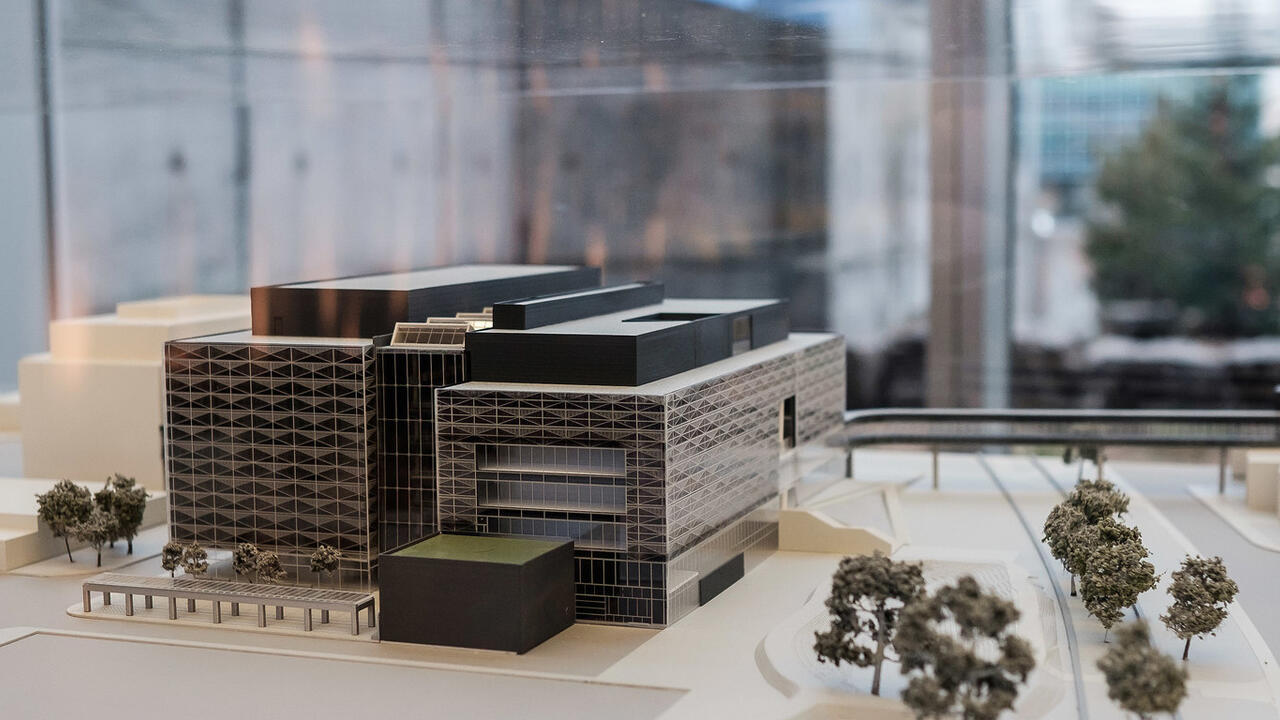
Waterloo students put their stamp on Engineering 7
Ideas behind the design of Engineering 7

Ideas behind the design of Engineering 7
By Kira Vermond Faculty of Engineering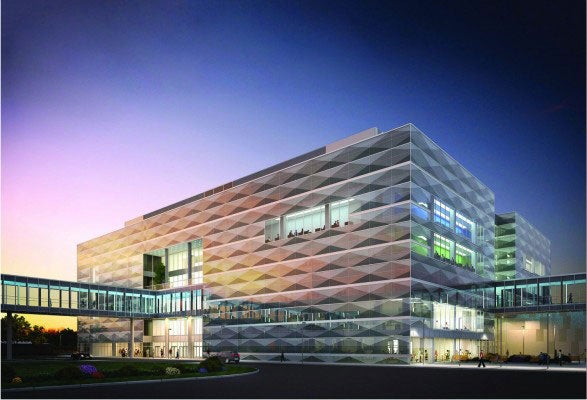 Back in early 2014, David Birnbaum found himself sitting in on meetings with some of the Waterloo Engineering’s most influential leaders. On the table for discussion? The new Engineering 7 (E7) building, an $88-million, 242,000-gross-square-foot, seven-storey structure and possible game-changer for more than 8,500 engineering undergraduates and graduates.
Back in early 2014, David Birnbaum found himself sitting in on meetings with some of the Waterloo Engineering’s most influential leaders. On the table for discussion? The new Engineering 7 (E7) building, an $88-million, 242,000-gross-square-foot, seven-storey structure and possible game-changer for more than 8,500 engineering undergraduates and graduates.
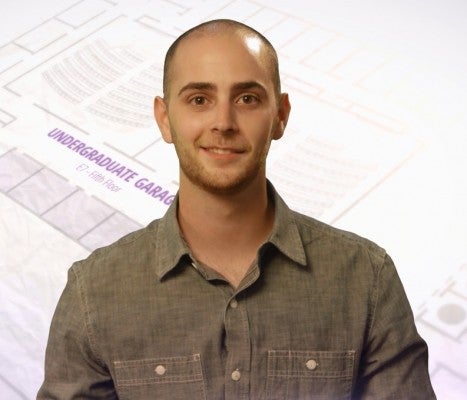
Birnbaum remembers one challenge the planning committee struggled with, figuring out how to convince future students to take the stairs to the upper-level lecture halls, rather than clogging up the elevator area and creating congestion.
Birnbaum, then the Engineering Society (EngSoc) president and now a 4th year civil Engineering undergrad, decided to speak up.
Why not design the stairwell like a spiral, so that each floor sits atop the one below it? The design would mean a faster and more practical way to get to class, he reasoned. The committee agreed and the stairwell went on the blueprint.
That engineering and design element is just one example of how E7 was partially conceptualized by the very people who will someday be using it – the students themselves. More than 40 class representatives gave feedback, outlining how they would like to see the space used so they would feel supported in their academic, research and entrepreneurial pursuits. Input ranged from creating gender-neutral washrooms to making sure all desks contained USB ports and plugs to charge computers.
The Nov. 12, 2015 groundbreaking ceremony was likely a bittersweet moment for students like Birnbaum, who will graduate before the doors open in September 2018. Even so, he knows his input will make a difference long-term.
“I’m going to be jealous of the students who will be in E7 using all that great space,” he says, laughing. “The whole building puts a focus on hands-on education. It will be quite awe-inspiring.”
E7 will support growth in the recently launched biomedical engineering program and the popular mechatronics engineering program. It will also offer space for some of the finest research facilities in the world, including an additive manufacturing (3D printing) laboratory and space for advanced robotic – testing autonomous and robotic vehicles. The first-floor RoboHub will turn the world of science fiction into engineering fact, while seven new lecture halls will give programs the space needed to educate a growing number of Canada’s top engineers.
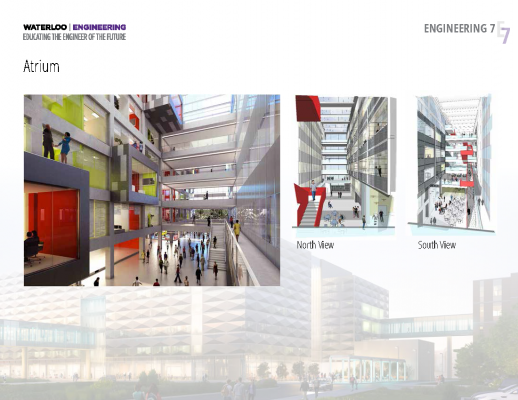
On the social side, Hannah Gautreau, current president of EngSoc and a third-year management engineering student, says she’s excited that the society will be able to offer students more services in a convenient location. A new C&D (short for coffee and doughnuts) café with plenty of seating allow students to meet, share ideas and unwind. No sprint across campus required. “I know how far it is to get to the C&D between classes in you’re on that side of Ring Road,” says Gautreau, who reveals that an expanded RidgidWare store will also open in E7. “With three buildings over there soon, we needed to expand to that section and make it feel more central.”
Shari King, a computational mechanics Masters student, is also excited by the possibilities that E7 will provide graduate students – despite the fact that she’ll have moved on by 2018. Testing facilities and graduate offices will give graduate students the tools they need to innovate, but the inclusive nature of the building will also create bridges between all students.
“You’ll have the benefit of upper years mingling with the lower years. Experience can transfer that way,” she explains.
But perhaps E7’s greatest gift to students will be its ability to bridge real-life learning with theory, whether by offering modern facilities for capstone projects, a dedicated space where student entrepreneurs can pitch ideas to industry – or one to design, build and test projects in the revolutionary Engineering Ideas Clinic.
“There are going to be a lot of areas where people can get their hands dirty,” says King.
Learning by doing works. Just recently, a U.S. study revealed that students who physically experience academic concepts understand them more deeply and score better on tests. The Engineering Ideas Clinic along with expanded space for a machine shop, student workshop and electronic components shop will give students the tools and space to literally build their ideas.
Yet, Birnbaum says it’s the holistic nature of the entire building that will give Waterloo’s future engineering students the real edge. A student could conceivably attend her very first university lecture in E7 and someday, with the help of entrepreneurial programs from the Conrad Business, Entrepreneurship and Technology Centre, which will move to E7, be prepared to launch their own business.
“It’s about staying ahead of the curve and educating the best engineering students in Canada. If I wanted to brainstorm a product or company, I’d go to E7,” says Birnbaum. “It’s going to be the place to make ideas.”

Read more
Here are the people and events behind some of this year’s most compelling Waterloo stories
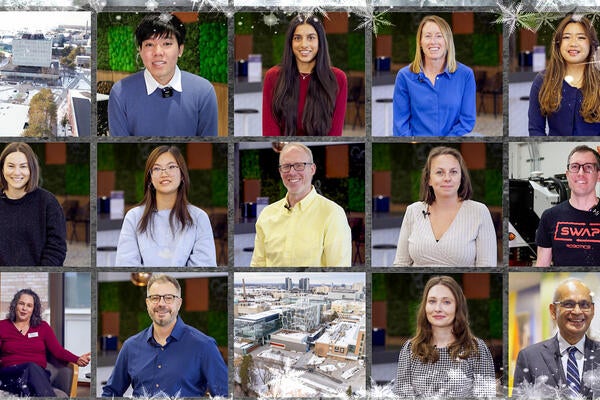
Read more
A winter holiday message from President Vivek Goel

Read more
The Waterloo community comes together to remember, reflect and respond to gender-based violence
Read
Engineering stories
Visit
Waterloo Engineering home
Contact
Waterloo Engineering
The University of Waterloo acknowledges that much of our work takes place on the traditional territory of the Neutral, Anishinaabeg, and Haudenosaunee peoples. Our main campus is situated on the Haldimand Tract, the land granted to the Six Nations that includes six miles on each side of the Grand River. Our active work toward reconciliation takes place across our campuses through research, learning, teaching, and community building, and is co-ordinated within the Office of Indigenous Relations.